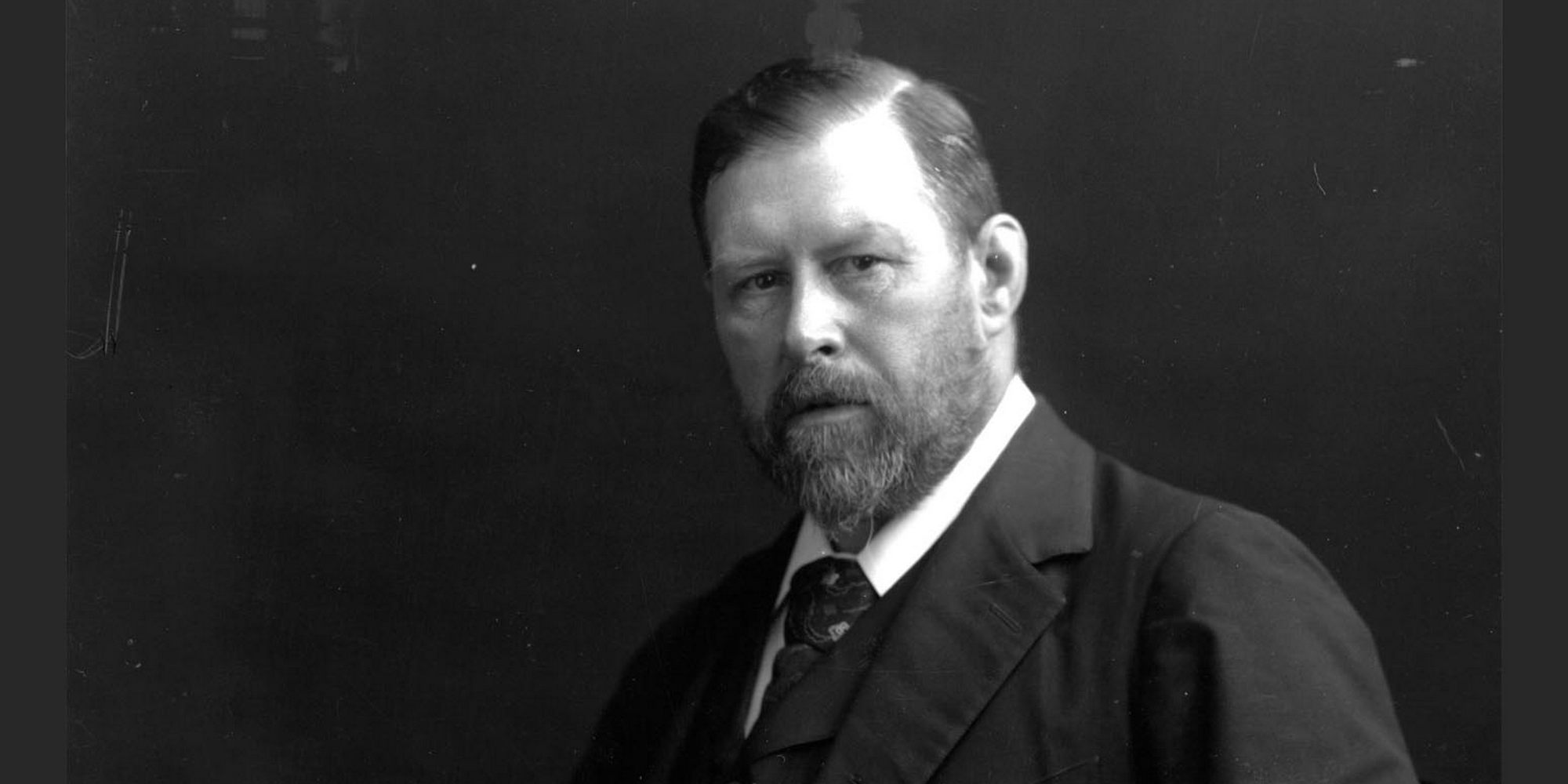
‘Children of the night… what music they make.’
David Stuart Davies writes about Bram Stoker
Bram Stoker will always be remembered as the creator of the world’s most famous vampire, Count Dracula, but he had more strings to his interesting bow than just that. Not only was he a very talented writer of strange tales, but he also helped to mastermind the career of one of the greatest Victorian actors.
Abraham (Bram) Stoker was born on 8 November in Dublin in 1847. He was denied the pleasures of a normal childhood for it was marred by illness. He spent much of his early life in bed and was often carried from room to room because he was not able to walk properly until he was seven. To entertain her sickly child, Charlotte Stoker spent many hours reading to him, regaling him with grim tales of Irish folklore full of gruesome and haunting images which fired Bram’s imagination and helped to shape much of his mature literary output.
Remarkably Stoker overcame his early incapacities and grew into a sturdy youth. After studying at Dublin University, he followed in his father’s footsteps and became a civil servant, an occupation he grew to dislike intensely. To provide a diversion from the mundane chores in the office, Stoker began writing stories which were published in various magazines. He also took up the role of theatre critic for Dublin’s Evening Mail. This post led him to a fateful meeting with the renowned actor Henry Irving. His very favourable review of Irving’s Hamlet prompted the actor to invite Stoker to dine with him. The two men liked each other immediately and at that first meeting, they forged a life-long friendship. In 1878 Irving persuaded Stoker to move to London to become manager of not only of the Lyceum Theatre but also the actor himself.
Once settled in England, Stoker began to write fiction again and in 1881 he published his first book, a collection of macabre fairy stories, Under the Sunset. In the meantime, his connection with Irving brought him into contact with many noted men of letters including George Bernard Shaw, Arthur Conan Doyle, Wilkie Collins, William S. Gilbert and Walt Whitman.
In 1890, he began working on what was to become his masterpiece, Dracula. He laboured almost seven years on the novel, researching European folklore and vampire tales from around the world. Although he travelled widely with Irving in his role as manager, Stoker never set foot in Transylvania. All the details included in his novel concerning this area were gleaned from books.
The arch vampire Dracula is a tall, lean mesmeric character who, it has been suggested, exhibited the same gaunt appearance and commanding presence of Henry Irving himself. The actor was described as having ‘a tall slender figure – about 6ft 2 – a long, strikingly sensitive face and a dominant, rather sardonic presence which both fascinated and intimidated.’ Indeed Stoker hoped that Irving would play Dracula on stage but the actor disliked the work intensely and dismissed the idea completely.
The original title of the novel was The Dead Un-Dead which was changed simply to The Un-Dead before becoming Dracula only a few weeks before publication in 1897. The book was an instant best seller. Much of the novel’s immediate success was due to Stoker’s innovative use of a contemporary setting. Readers were able to identify with the modern English scene, which provides the backdrop for the bulk of the narrative. Stoker added to the vampire lore as presented in previous works of fiction by other writers. It was Stoker who conceived the idea of the vampire needing to lie in a coffin in his native soil during daylight hours, requiring an invitation to enter a building and casting no reflection in a mirror. These rules have been adhered to in countless stories and movies.
Following the success of Dracula, Stoker quickly began work on new writings. He would publish nineteen novels before the end of his life. However, none achieved the same success and notoriety as his vampire classic. This is a shame for some of his short stories and in particular, the novels The Jewel of Seven Stars (1904) and The Lair of the White Worm (1911) embody the same kind of fearful supernatural chills as Dracula.
The ill health that Stoker had experienced in his youth seemed to return in later life. In October 1905, Sir Henry Irving died suddenly while on tour in Bradford. His death was a great shock to Stoker and as a result, he suffered a stroke from which he never fully recovered. His ability to walk was impaired and his eyesight deteriorated so much that he needed a magnifying glass to write. His last years were ones of illness and suffering. He died in 1912.
After his death, a kind of codicil to Dracula, the short story ‘Dracula’s Guest’ was published by his wife who had discovered the manuscript amongst his papers. Originally this was thought to be a chapter excised from the novel, but several Stoker scholars have asserted that it was written as a free-standing narrative.
It is fair to say that Bram Stoker was not in the first division of literary men of his time, but by his creation of the gothic masterpiece Dracula, and writing a series of highly entertaining supernatural tales he has made an indelible mark on the world of storytelling.